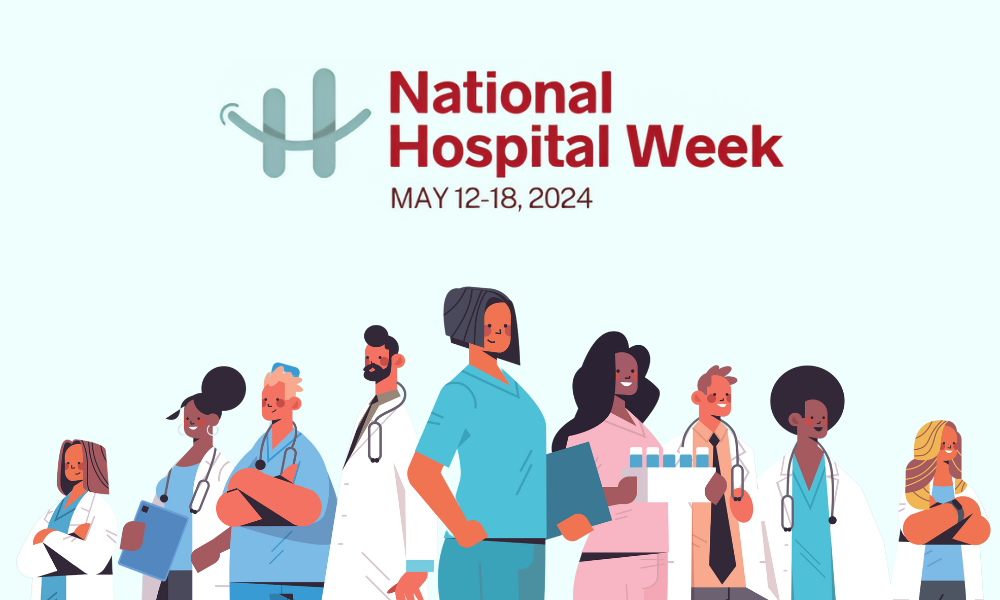In This Issue
- Top Story: Emergency Medicine Residents Lacking in Rural America
- Locum Tenens: A Solution to Physician Burnout?
- AMN Survey: Most Healthcare Facilities Use Locum Tenens Staff
- 9 Ways Healthcare Facilities Are Addressing Staff Shortages
- In-Depth: COVID-19’s Impact on Rural Healthcare
- The Physician Shortage: Why Concierge Medicine May Be the Solution, Not the Problem
- Overcoming Burnout, Cultivating Compassion & Improving Efficiency to Build a Better Healthcare Practice
- Socially Speaking: Notable Tweets from Integrity, LT.com, Physician on Fire & Interim Physicians
- Digital Patient Engagement Tackles Labor Crisis, Improves Patient Experience
- Staffing-Related Snippets: A “Digital Home for Doctors,” 6 Industries Deliver Most Internal Recruiters & Surgeon General Report Suggests Solutions To Burnout
Top Story: Emergency Medicine Residents Lacking in Rural America
(Edited from Physicians Weekly 5/18/2022)
Rural areas of the United States lack enough emergency medicine residents and residency training programs, according to a study published online on May 12 in the Annals of Emergency Medicine.
Christopher L. Bennett, MD, from the Stanford University School of Medicine in California, and colleagues analyzed demographic information and mapped county-level, population-adjusted, and hospital-referral-region densities for emergency medicine residents in the 2020 American Medical Association (AMA) Physician Masterfile, comparing 2020 to 2008 resident physician densities.
In addition, the Stanford team analyzed all Accreditation Council for Graduate Medical Education (ACGME)-accredited emergency medicine residency programs from 2013 to 2020.
The researchers found that in the 2020 AMA dataset, there were 6,993 emergency
medicine residents with complete information; 98 percent were in urban areas. This represented disproportionate increases in urban areas per 100,000 US population, compared with 2008.
Using the ACGME data, 160 (2013) to 265 (2020) residency programs were identified. The new programs were three-year training programs and were disproportionately added to states that already had a higher number of programs, including Florida, Michigan, New York, Ohio, Pennsylvania, and California.
“Our findings of a vast region of the country without emergency medicine residents or residency programs—an emergency physician ‘desert’—add a necessary, currently absent level of context and depth to the ongoing conversation surrounding the emergency physician workforce,” the authors wrote.
Abstract/Full Text (Subscription or payment may be required.)
All News Is Locums
Locum Tenens: A Solution to Physician Burnout?
(Edited from Physicians Weekly article by Duane Gainsburg, MD, FACS)
As the shortage of experienced and skilled physicians continues to grow nationwide, so will cases of physician burnout. There simply aren’t enough physicians and enough hours in the day to cover all the needs.
After many years of practicing neurosurgery, my professional life was being eaten into by the inevitable hassles of insurance matters, hospital politics, and the business side of my practice. If my wife hadn’t been working as my office manager, I probably wouldn’t have seen her more than a few hours every week. I found myself depressed, angry, and considering closing my solo practice altogether.
Fortunately, I’ve discovered a cure for burnout: locum tenens.
In early 2004, I met a fellow neurosurgeon who had been through the same challenges as I and had opted for a career as a locum tenens physician. It didn’t take much convincing, and after completing a few trial neurosurgery assignments, I closed my office in favor of ongoing locum tenens work.
The change in my attitude and energy is remarkable, and thanks to the example of other doctors working in locum tenens, I now look forward to my monthly 7-to-10-day assignments. My family has benefited from my improvement in attitude and energy, and I tell my colleagues that my newfound career path has created the balance in my life I was searching for.
My income is steady and predictable. I am no longer bound by, or bogged down in, day-to-day office bureaucracy and insurance company stratagems. And I have the freedom to spend quiet evenings and vacations with my family without the constant stream of phone calls.
My practice and my income are no longer tied to “production units” or how many surgical procedures I do. Now, I can spend my time working with patients and their families, listening to their issues, explaining the scope of the illness or disease, and discussing treatment alternatives.
There is a professional satisfaction that comes from doing what is best for the patient and the hospital. And there’s a personal satisfaction that comes from being able to divorce what I do from my compensation. Doctors are not businessmen, and locum tenens provides me the opportunity to do what I wanted to do in the first place: take care of patients.
Burnout is still a big problem in our profession, but it’s no longer an issue for me.
AMN Survey: Most Healthcare Facilities Use Locum Tenens Staff
(Edited from AMN Healthcare news release, 5/31/2022)
Nearly 90% of healthcare facilities used locum tenens physicians and/or advanced practice professionals to fill gaps in their staffs last year, according to a new survey from AMN Healthcare.
The company’s 2022 Survey of Locum Tenens Staffing Trends indicates that 88% of hospitals, medical groups, and other healthcare facilities used locum tenens physicians, nurse practitioners (NPs), and/or physician assistants (PAs) sometime in the prior 12 months, primarily to address staffing shortages.
“A long-standing shortage of physicians, which has been exacerbated by COVID-19, has made locum tenens physicians an even more essential part of delivering quality care at most hospitals in the United States,” AMN Locum Tenens Division President Jeff Decker said. “They are part of an increasingly flexible healthcare workforce that can be mobile and able to deliver care when and where they are needed most.”
Seventy percent of survey respondents indicated they use locum tenens physicians and other providers to maintain services while they seek to fill openings in their permanent staffs. Twenty-five percent use them to meet rising patient demand, while 13% use them to address provider burnout, which has become more prevalent during the COVID-19 pandemic.
COVID-19 Driving Locum Tenens Use
Anesthesia providers, including anesthesiologists and certified registered nurse anesthetists (CRNAs), were the most utilized type of locum tenens healthcare professionals last year, the survey indicates. According to AMN’s Decker, hospitals, medical groups, and other facilities needed more anesthesia providers as procedures requiring anesthesia rebounded from COVID-19 related lows.
As COVID-19 increased inpatient volumes, hospitalists were the second-most-utilized type of locum tenens provider, according to the survey. Psychiatrists were third on the list, likely reflecting the increased incidence of mental health problems and highlighting the dearth of behavioral health professionals that preceded the pandemic.
Addressing Staffing Shortages
The survey asked hospital and medical group managers to indicate what their facilities are doing to address staffing shortages. The majority (54%) said they are adding new incentives, such as signing bonuses, to their recruiting packages. An additional 49% are implementing new retention efforts, including offering retention bonuses to providers. Forty-three percent are adding temporary staff while 35% are expanding telehealth services.
In addition, some facilities are cutting back on services in response to staffing shortages, a strategy that was common during the height of the COVID-19 pandemic, when many healthcare facilities curtailed elective procedures and other services. Eighteen percent of those surveyed said their facilities are reducing hours of service in some areas, 14% are canceling elective procedures, and 11% are eliminating some service lines and programs.
“The fact that healthcare facilities continue to halt electives or reduce hours due to a lack of staff underscores the direct connection between staffing shortages and patient access to care,” Decker said. “Additional provider training, the expansion of telemedicine, and reduced barriers to licensure will be essential to addressing this long-standing healthcare challenge.”
AMN Healthcare’s 2022 Survey of Locum Tenens Staffing Trends (formerly conducted by Staff Care, a division of AMN Healthcare) is based on responses from 202 hospitals, medical groups, and other healthcare facility managers. A copy of the survey report can be accessed here.
9 Ways Healthcare Facilities Are Addressing Staff Shortages
(Edited from Becker’s ASC Review article by Alan Condon, 5/31/2022)
Staff shortages continue to challenge hospitals and health systems across the country because of the COVID-19 pandemic’s effects. Burnout remains a key issue in the healthcare workforce.
Here are nine steps healthcare facilities are taking to address staffing shortages, according to AMN Healthcare’s recently released 2022 Survey of Locum Tenens Staffing Trends.
1. Including more hiring incentives, such as signing and referral bonuses: 54 percent
2. Implementing retention strategies, such as retention bonuses: 43 percent
3. Hiring more temporary staff, such as travel nurses, locum tenens physicians, and advanced practice providers: 43 percent
4. Expanding telehealth services: 35 percent
5. Reassigning staff to units with more pressing needs: 23 percent
6. Installing new technology platforms: 18 percent
7. Reducing hours of service: 18 percent
8. Canceling elective procedures: 14 percent
9. Eliminating certain clinical services or programs: 11 percent
Note: The survey is based on 202 email surveys sent to healthcare administrators at hospitals, medical groups, federally qualified health centers, and other facilities during February and March
In Depth: COVID-19’s Impact on Rural Healthcare
[Edited from Acute Care, Inc. (ACI) blog post by ACI CEO Paul Hudson, FACHE, 5/13/2022]
The Bipartisan Policy Center (BPC) recently posted a 113-page report entitled The Impact of COVID-19 on the Rural Health Care Landscape: Challenges and Opportunities. The purpose of this entry in the “In Depth” series is to summarize the report’s findings and recommendations.
The introduction sets the stage and explains the report’s methodology (emphasis added):
Before the COVID-19 pandemic began, hospital closures were increasing in rural communities across the nation: 116 rural hospitals closed between 2010 and 2019.
Over the past two years, federal relief has helped stabilize facilities, and the pace of closures slowed. However, this assistance was temporary, and rural hospitals continue to struggle [both] financially and to recruit and retain nurses and other health care employees.
Against this backdrop, the BPC conducted a series of interviews over the last year with rural hospital leaders from eight states—Iowa, Minnesota, Montana, Nebraska, Nevada, North Dakota, South Dakota, and Wyoming—as well as with health policy experts from federal and state government, national organizations, provider organizations, and academia.
The goal was to gain on-the-ground insights into today’s rural healthcare landscape, where the population is older, sicker, and less likely to be insured or to seek preventive services than in urban areas.
The introduction also reveals the report’s focus on federal payors (emphasis added):
Today in rural America, roughly 1 out of every 3 individuals is enrolled in the Medicare program and nearly 1 in 4 individuals under age 65 relies on Medicaid as their primary source of healthcare coverage.
Although all payers should be part of the solution in ensuring access to quality rural health care, this report largely focuses on strengthening rural health care delivery in Medicare and Medicaid, given the outsized role these public programs play in rural communities.
Report Findings
- Rural healthcare facilities are at risk of service reduction or closing.
BPC assessed financial vulnerability across multiple domains and found that out of 2,176 rural hospitals, 441 face three or more concurrent financial risk factors, putting them at risk of service reduction or closure. Financial risk factors included negative total operating margin, negative operating margin on patient services alone, negative current net assets, and negative total net assets. - Hospital closures have multiple, significant impacts.
Rural hospital closures can significantly reduce access to healthcare services in the community, particularly in less densely populated places. According to a 2020 report by the US Government Accountability Office (GAO), one-way travel times to healthcare services increased by approximately 20 miles between 2012 and 2018 in communities with rural hospital closures. - Travel times for less common services increased even more.
For example, in some rural communities that GAO studied, the median travel distance for substance use treatment services rose from 5.5 miles in 2012 to 44.6 miles in 2018 following a closure. Closure of facilities also affects the availability of healthcare workers.
Three Immediate Interventions Proposed:
BPC recommends several short-term policies aimed at stabilizing and strengthening critical access hospitals (CAHs) and other small rural hospitals and rural health clinic services. The proposals are designed as a bridge as healthcare systems exit the pandemic and move toward longer-term reforms.
Policy recommendations include:
- Providing rural hospitals full relief from across-the-board Medicare spending reductions, known as sequestration, until two years after the federal public health emergency (PHE) ends
- Taking rural facilities out of the ongoing “extender” and “needing to be renewed” budget cycles, including by permanently authorizing the Medicare Dependent Hospital (MDH) program and making rural, low-volume payment adjustments permanent.
- Updating or rebasing Sole Community Hospital (SCH) and MDH payment structures to ensure reimbursement is in line with current costs.
The report addresses the role of the new Rural Emergency Hospital (REH) designation…
The report is extensive, comprehensive, and replete with practical proposals for rescuing at-risk rural health facilities and building a sustainable future.
To learn more about BPC’s recommendations and the REH designation’s role in it, click here and here.
The Healthcare Staffing Story
The Physician Shortage, Part 1: Why Concierge Medicine May Be the Solution, Not the Problem
The American Association of Medical Colleges (AAMC) now estimates a shortage of between 37,800 and 124,000 physicians by 2034.
(Edited from Medical Economics article by Terry Bauer, 5/17/2022)
As the pandemic slowly morphs into an endemic, its impact on primary care physicians continues to tug at the seams of an already fraying healthcare system. Now rising to the top of America’s healthcare challenges is the looming physician shortage, predicted with increasing urgency every year since the early 2000s.
Accelerated by a perfect storm of pandemic closures, physician retirements, an aging population, and escalating demand for acute and preventive care, the AAMC) now estimates a shortage of between 37,800 and 124,000 physicians by 2034.
Simultaneously, the current surging popularity and predicted 10% annual growth of concierge medicine practices, characterized by patient panels kept intentionally small and personalized, appears to intensify the issue at a pivotal time.
However, appearances can be deceiving and statistics can be misleading. Following are reasons to recognize the opposite may prove to be true: concierge medicine is not fueling the physician shortage, but in fact, may represent one of the most viable potential solutions.
By presenting a sustainable, autonomous model that eliminates much of the burnout continuing to pummel the spirits of our country’s healthcare community, concierge medicine is both extending the active practice years of experienced, dedicated physicians and inspiring the best and brightest students to enter primary care.
The dialogue on how to fix a broken healthcare system, which began well before the pandemic, has shifted to increased recognition of the value offered by this alternative practice model.
Build a Better Model
For example, Erin Sullivan, PhD, research and curriculum director at Harvard Medical School Center for Primary Care, told Scientific American: “Pre-pandemic, I would have said, ‘We don’t have enough physicians choosing to practice primary care. And if those physicians who do choose primary care elect to practice in models such as concierge, then you could see how that would exacerbate a shortage.
“On the other hand, if these models prove to be more attractive or sustainable ways for physicians to practice primary care, then can we increase the number of physicians electing to practice primary care? And can we learn from these models to build something better and accessible for all patients?”
When asked about the effect of concierge and direct primary care models on the physician shortage, Dr. Reid Blackwelder, past president of the American Academy of Family Physicians and currently the chair of family medicine at East Tennessee State University, told Medscape: “All of these models are ways of investing in primary care. Primary care is about relationships and communication, and that’s really one of the benefits of any model. With the pandemic, we’ve made some changes in how we interact with our patients that I think were exactly what we needed.”
“Listen to your patient; he is telling you the diagnosis.”
The observation made in the 1890s by internal medicine pioneer Dr. William Osler holds true for today’s physicians, who have accurately diagnosed the major cause of our system’s ills: emphasizing volume-based care with little regard for the individual practitioner trapped on the hamster wheel.
Doximity’s 5th annual Physician Compensation Report found that more than 73% of physicians said they were overworked. It seems, then, no wonder that more than half of physicians surveyed by Jackson Physician Search said they were considering an employment change, such as retirement (21%), leaving the profession (15%), or finding a new employer (50%).
The most recent report from Medscape underscores the ongoing dissatisfaction, with 55% of physicians saying they would take a salary reduction to achieve a better work-life balance.
Failing to care for the caregivers in a traditional fee-for-service practice model or in a large healthcare system group is quickening the exodus of dedicated physicians who feel unheard and unappreciated. The Advisory Board sounded the alarm earlier this year, writing:
“Whether it’s during the omicron surge or shortly after it passes, there has never been a moment when we think doctors are more likely to quit. And even if they don’t quit, we question the quality of care that’s being delivered, given that burnout leads to worse patient outcomes and increased medical errors.”
Achieving Satisfaction
In contrast, concierge medicine physicians are remaining in practice longer than they initially planned, buoyed by an intense satisfaction with their calling and the ability to balance personal and professional needs.
Long-time physician search expert and founder of Athenic Group Craig Fowler notes that in his work on succession planning with doctors, those in a concierge practice consider retirement at a significantly older age than those in a traditional model. “They’re able to slow down, enjoy a good quality of work life and retire on their own timetable,” he says.
“On the other end of the spectrum, I’m also seeing a real movement toward this type of practice among younger physicians, who are very intrigued by the opportunity to remain independent and provide highly personalized care.”
For related physician testimonials, click here.
The Physician Shortage, Part 2:
Keeping the Doors Open with Concierge Medicine
For concierge medicine physicians, while the pandemic was difficult and demanding, their professional survivability was never in question.
(Edited from Medical Economics article by Terry Bauer, 5/23/2022)
In Part 1, we described the role concierge medicine plays in extending the active years of experienced, dedicated doctors and helping to significantly ease the looming physician shortage. Now we consider how concierge medicine has sustained the practices of independent primary care physicians who are rapidly becoming a vanishing breed in the US.
Among the pandemic’s many heartbreaking statistics is this one: In 2020 and 2021, more than 24,000 independent practices were reported permanently or temporarily closed.
We now have an even clearer picture of the pandemic’s impact on private practitioners with new data from Avalere and the Physicians Advocacy Institute (PAI) showing that almost three-quarters of US doctors now work for hospitals, health systems, or corporate entities. That represents an almost-20-percent jump since 2019.
“COVID-19 drove physicians to leave private practice for employment at an even more rapid pace than we’ve seen in recent years,” according to Kelly Kenney, chief executive officer of PAI. ”This study underscores the fact that physicians across the nation are facing severe burnout and strain. Between the financial stress that the pandemic had on practices, because they certainly had little revenue for a while, and the stress that physicians have felt mentally, you can’t overstate that.”
Outlook Dire
While a sense of normalcy is returning to everyday life, for primary care physicians in traditional fee-for-service practices, the situation remains bleak. According to the most recent Primary Care Collaborative survey, more than half of physicians say primary care is crumbling: More than 40% describe themselves as mentally and financially fragile; a third report they are currently denied and/or seriously overdue payments from insurers and health plans, and only 21% find the fee-for-service form of payment sufficient.
We have long understood that the traditional fee-for-service payment model is simply not sustainable. Consider that since 2001, Medicare physician payment has fallen 20%, adjusted for inflation, while the cost of running a medical practice has increased 39%
Becoming a hospital-employed physician doesn’t provide a neatly packaged solution, either. As reported in a recent Forbes article, after a physician practice is acquired, prices for healthcare services increase by 14%, and hospital revenue rises by nearly 20%. However, most physicians are not benefiting, but are earning 20% less than independent practitioners, according to a 2022 Medscape survey.
Most troubling, as a result of the myriad challenges with seemingly no end, 25% of the physicians surveyed by the Primary Care Collaborative expect to leave primary care in the next three years. A December 2021 AMA survey reported that one in five physicians said they would likely leave their current practice within two years. The impact of this physician exodus is an incalculable loss that will be felt for many years to come.
However, for concierge medicine physicians, while the pandemic was difficult and demanding, their professional survivability was never in question. A stunning zero percent of concierge medical practices were closed during the pandemic, and they continue to thrive in 2022, based on a solid foundation of revenue driven by membership fees.
Freed from financial worries and overloaded patient panels, concierge physicians not only keep their doors open, but their minds and hearts as well.
For related physician testimonials, click here.
Tools to Try/News to Use
Practice Excellence:
Overcoming Burnout, Cultivating Compassion & Improving Efficiency to Build a Better Healthcare Practice
(Edited from recent RxVantage/BioPharma Dive post)
LIVE WEBINAR
Wednesday, June 8 | 2 pm ET
Duration: 1 hour
Can’t make the live date? Register and we’ll send you a link to the recording.
The COVID-19 pandemic initiated a global health crisis that only exacerbated existing levels of burnout among healthcare providers and medical professionals. In this high-stress environment, the goal of achieving practice excellence seems like a far-off luxury.
But while there are a variety of ways to address the physical, mental, and emotional stresses that today’s healthcare employees face, it’s important to understand that practice excellence can remain a focus. In this webinar, you’ll hear how the definition of practice excellence has changed and how individuals and healthcare institutions can achieve a return to joy, including:
- Strategies for elevating practice excellence by overcoming burnout
- Why healthcare organizations need to adopt a new service paradigm to achieve better clinical and business outcomes
- How healthcare organizations can reward both compassion and competence within the workforce, and thereby elevate practice excellence
Socially Speaking
From Twitter:
How ‘Bout This?
Digital Patient Engagement Tackles Labor Crisis,
Improves Patient Experience
(Edited from OphthalmologyTimes article by David Peterson, 5/16/2022)
For healthcare workers, the pandemic has led to increased burnout, concerns about workplace safety, and staffing shortages that threaten not only patient care but also the entire provider ecosystem.
The detrimental effects of COVID-19 changed healthcare possibly forever. Patients are demanding more control and a safer, more simplified experience. For healthcare workers, the pandemic has led to increased burnout, concerns about workplace safety, and staffing shortages that threaten not only patient care but also the entire provider ecosystem.
Approximately 30% of healthcare workers are considering leaving their profession altogether and approximately 60% report impacts to their mental health stemming from their work during the COVID-19 pandemic, according to a 2021 survey conducted by The Washington Post and the Kaiser Family Foundation. This unprecedented labor shortage trend is also expected to continue through 2022 and beyond, according to predictions released by Moody’s Investors Service.
Consumerism and the Labor Shortage
The far-reaching impact of this labor shortage begs the question: What can hospitals and physician practices do to alleviate patient and staff fears, continue delivering an outstanding experience, and protect their financial viability?
The choice is easy. If nothing is done or progress is made slowly, they risk the fate of Blockbuster Video. Embracing technologies that other industries have used for decades to solve similar challenges will more than likely lead to greater productivity, satisfaction, and financial success.
The simple truth is healthcare consumers of all ages now expect digital solutions that enable them to engage with their care as easily as they book travel or shop online. Giving patients the digital tools to self-serve will directly reduce staffing pressure experienced by every healthcare provider in the nation.
There is also value for hospitals. By utilizing patient-facing technology, facilities can increase patient volume and related revenue, improve efficiencies, and decrease costs.
Automating self-registration and myriad other tasks associated with appointments reduces the burden on existing staff, freeing them for higher-value tasks, which also creates a clearer path of advancement for entry-level staff, contributing to lower attrition and recruiting demands.
Bridge Staffing Gaps with Smart Technology
Patient access typically requires a small ecosystem of staff—which is in alarmingly short supply right now. By adopting proven technology and automation, providers can reduce the resources they need and dramatically increase the productivity of the staff they do require. Consolidating systems and deploying a comprehensive platform that complements the clinical tools of an electronic health record enables the flexibility for patients and staff to share responsibility for completing the financial and administrative aspects of healthcare. Integrating intuitive solutions for digital patient intake, engagement and access creates a true win-win.
Implementing technologies that leverage adaptive rule engines, robotic process automation, and artificial intelligence into the patient intake, engagement, and access processes don’t just reduce the labor resources required—patients prefer the experience because they’re used to it in other aspects of their lives.
Easy-to-use text messaging, email, and voice technologies, along with highly intuitive digital-user experiences on their own devices, help automate and simplify the patient journey safely from preregistration to discharge. Benefits include the following:
Give Patients What They Want
Self-registration saves time, eliminates errors, and increases satisfaction by allowing patients to provide, review and edit demographic information, upload identification and insurance cards using their mobile phone’s camera, and digitally complete and sign other forms for pre-registration and registration/check-in.
Patients get accurate out-of-pocket cost estimates they can trust to make payments with a single click, which alleviates their financial anxiety and optimizes cash collections and revenue for providers.
Healthcare facilities can communicate timely preservice information, such as fasting reminders and directions to the site of care, and conveniently add the appointment to the patient’s digital calendar.
Predefined and custom text messaging can acknowledge patient arrival and provide a QR code that serves as a pass to quickly enter the facility and go directly to their service location, making long, crowded waiting rooms a thing of the past.
Patients want access to digital engagement solutions that create a safer and more customer-friendly experience, whereas providers must be nimble to adapt to labor and staffing challenges and reduce costs. Thankfully, it’s never been easier to deliver singular solutions that address both.
Staffing-Related Snippets
Well Ventures, Physician-backed Cherry Health Aim to Build “Digital Home for Doctors.”
(Edited from betakit article by Josh Scott, 5/27/2022)
Launched by a family physician and a pair of tech leaders during the early days of COVID-19, Cherry Health wants to solve the physician staffing crisis facing Canadian medical practices.
The Calgary-based health tech startup, which describes itself as “Canada’s medical staffing network,” offers a smartphone-based, self-serve, job-matching app that connects doctors to medical clinics seeking to fill locum positions…
Cherry Health has secured $1.23 million CAD in pre-seed financing led by Well Health’s venture arm, Well Ventures, to build “a centralized locum network.”
Which Industries Deliver the Lion’s Share of Internal Staff to Ecosystem? + Staffing Word Of The Week
(Edited from SIA Daily News, 5/24/2022)
Some two-thirds of internal staff at staffing firms were recruited from just six industries, according to the “By the Numbers” column in the latest issue of Staffing Industry Review.
Those six industries are:
- Business professional services, 14%
- Healthcare (hospital/clinical), 11%
- Technology/telecom, 11%
- Restaurant hospitality, 11%
- Retail trade, 9%
- Finance/insurance, 9%
Internal workers at staffing firms carry different titles such as “recruiter,” “salesperson” and “branch manager.” One term for certain internal workers highlighted in Staffing Industry Analysts’ online Lexicon is “staffing consultant.” It’s also this week’s Staffing Word of the Week.
Surgeon General Issues Report, Suggests Solutions To Healthcare Worker Burnout
(Edited from Fierce Healthcare article by Robert King, 5/24/2022)
Recently US Surgeon General Vivek Murthy, MD, released a general advisory highlighting [healthcare] worker burnout, an issue before the pandemic that has worsened during the COVID-19 pandemic.
Murthy is pressing for collaboration among regulators, health systems, communities, and other key stakeholders to take a “whole-of-society” approach to the problem.
Murthy’s advisory lays out a series of recommendations to combat burnout, which is likely to get worse, with more than half a million registered nurses retiring by the end of the year and a shortage of more than three million low-wage health workers projected over the next five years.
Click here to learn more about Murthy’s recommendations.








